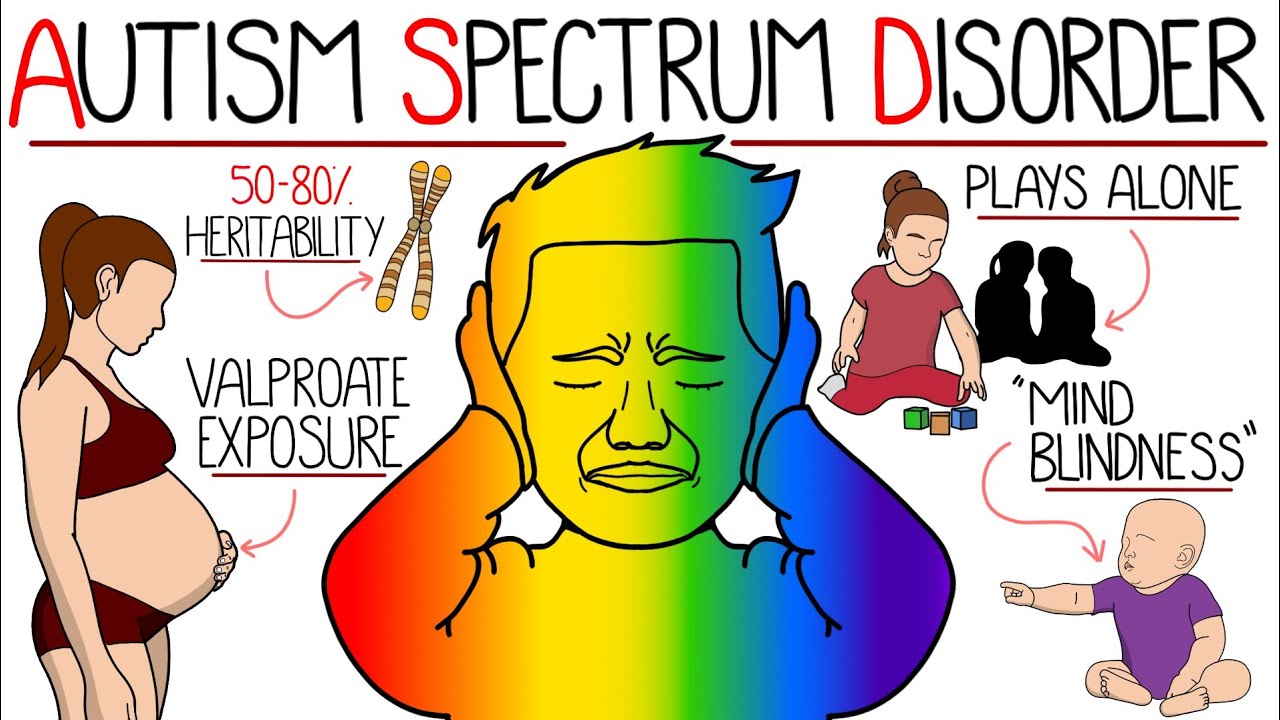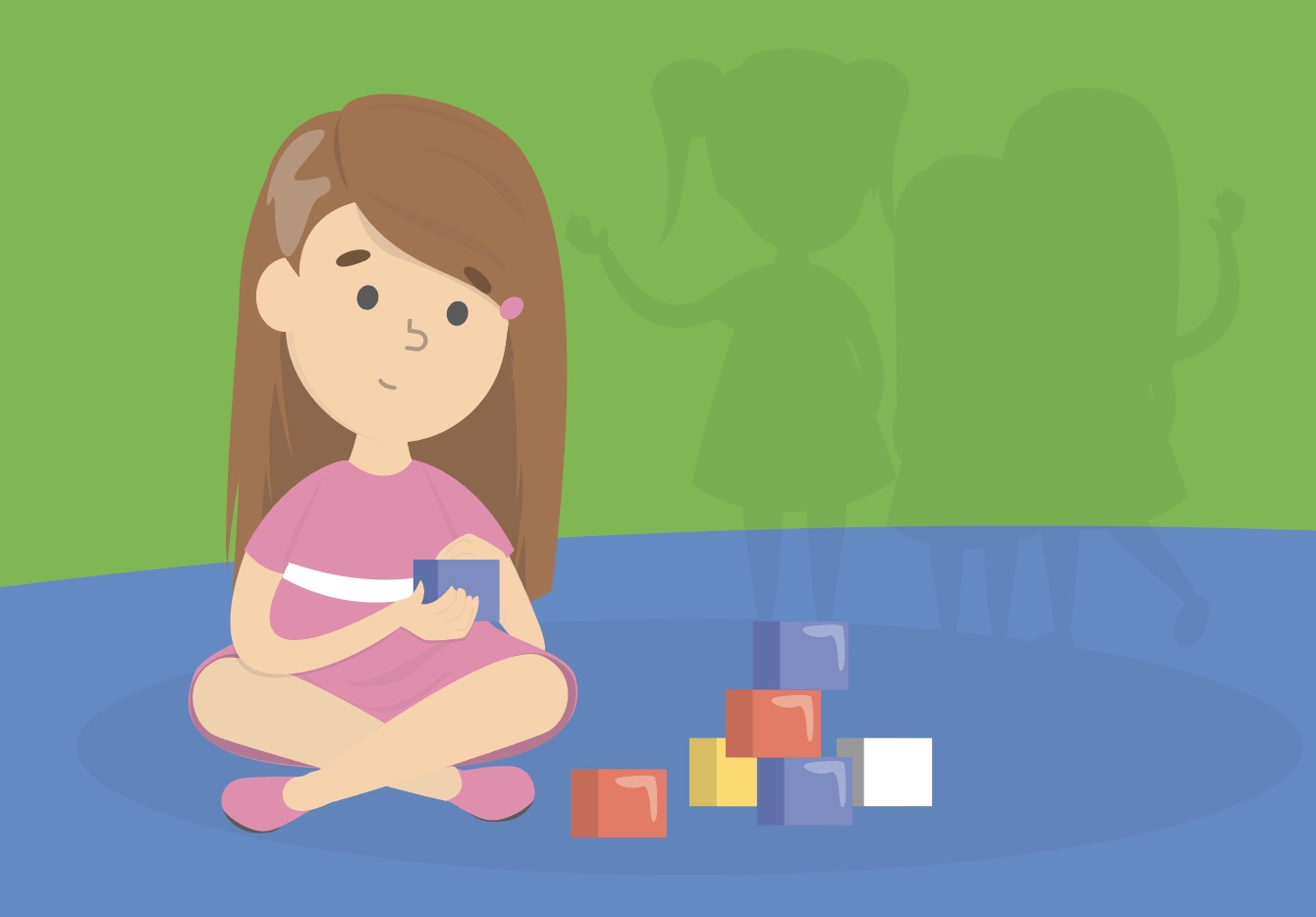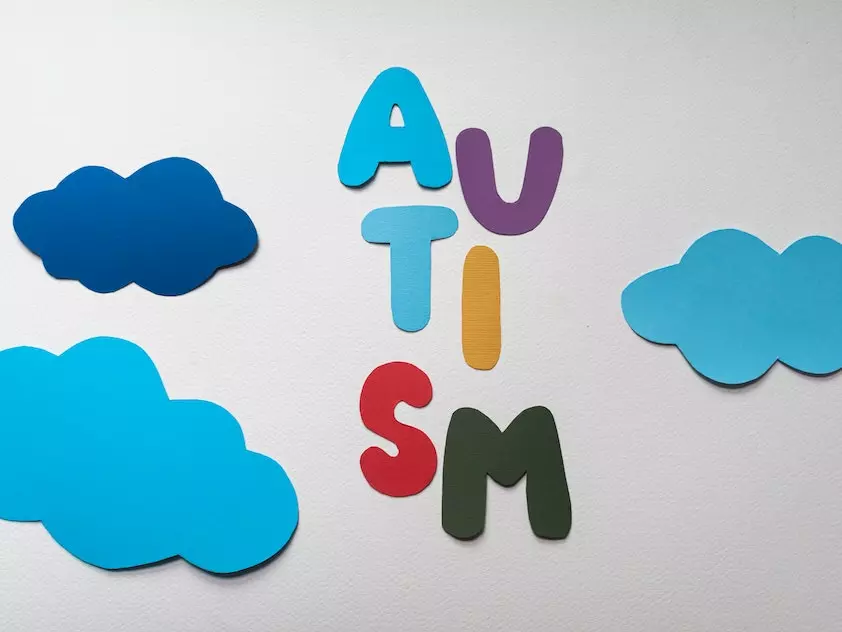Every person is unique. Our brains work in different ways. We think differently. We interact differently. One way brains can develop differently is called Autism Spectrum Disorder. This is often shortened to ASD. Autism Spectrum Disorder is a condition. It affects how a person communicates. It affects how they interact with others.

It affects how they behave. It also affects how they learn. The word “Spectrum” is very important here. It means it affects people in many different ways. It affects them to different degrees. Understanding Autism Spectrum Disorder helps us understand neurodiversity. It helps us support people on the autism spectrum. This article explains Autism Spectrum Disorder. It talks about its characteristics. It discusses diagnosis. It covers support options.
What is Autism Spectrum Disorder (ASD)? Defining the Spectrum
Autism Spectrum Disorder is a neurodevelopmental difference. “Neurodevelopmental” means it affects how the brain grows and develops. It starts in early life. It is a lifelong condition. People do not “catch” autism. They are born with differences in their brain wiring.
The “spectrum” idea is key to understanding Autism. Think of a rainbow. It has many colors. They blend together. The autism spectrum is similar. People on the spectrum have different strengths. They have different challenges. Some need a lot of support in daily life. Others need less support. Some people might have strong verbal skills. Others might not speak or speak very little. Some might avoid social interaction. Others might want friends but struggle with social rules.
So, Autism Spectrum Disorder looks different in each person. There is no single “look” or “way” to be autistic. Every person on the autism spectrum is unique. They see the world differently. They process information differently. This difference is part of their identity.
Key Characteristics of Autism Spectrum Disorder
Doctors diagnose ASD based on certain characteristics. These characteristics fall into two main areas. They must be present from early childhood. They must cause problems in daily life.
Area 1: Challenges with Social Communication and Interaction:
This area covers how a person communicates and connects with others. Difficulties might include:
- Problems with back-and-forth conversation. It can be hard to start or continue a chat. It might be hard to understand social cues in conversation.
- Trouble understanding social cues. This means missing body language. It means not reading facial expressions well. It means not fully understanding tone of voice.
- Difficulty sharing interests or emotions. It might be hard to show or talk about feelings. It might be hard to understand or respond to others’ feelings.
- Challenges making or keeping friends. This is not because they don’t want friends. It is because social rules can be confusing. They might not know how to start or keep social interactions going.
- Differences in using or understanding nonverbal communication. This includes eye contact. Some people might avoid it. Some might use it differently. Facial expressions might be limited. Gestures might be used differently.
- Lack of interest in others. This can vary greatly. Some people might show little interest. Others might want to interact but not know how.
Area 2: Restricted, Repetitive Behaviors, Interests, or Activities:
This area covers patterns of behavior, interests, or activities. These are often intense or repetitive. Characteristics might include:
- Repetitive movements. These are often called stimming. Examples are hand flapping, rocking, spinning, or repeating sounds. Stimming can help manage feelings or sensory input.
- Needing strict routines. Changes can be very upsetting. Following a set schedule or route is important for feeling safe.
- Highly focused, intense interests. People might have special interests. These interests are very strong. They might know everything about one topic. This interest can be a source of joy and expertise.
- Unusual reactions to sensory input. Senses include touch, sound, sight, taste, smell, movement, and body awareness. People might be overly sensitive to loud noises or bright lights. Or they might seek out certain textures or movements.
- Repeating words or phrases. This is called echolalia. They might repeat what they hear right away. Or they might repeat phrases later. It can be a way to understand or communicate.
- Strong preference for sameness. They might like things to be exactly the same. Small changes can cause significant distress.
It is important to remember this. These are characteristics. They are part of how an autistic brain works. They are not choices. Not every person with autism has all these characteristics. They show up differently. They also have different levels of impact. Some characteristics are very noticeable. Others are subtle.
Early Signs of Autism Spectrum Disorder
Signs of Autism Spectrum Disorder often show up early. They might be noticed when a child is a toddler. Sometimes signs are seen even earlier. This is usually by age 2 or 3. Early identification is very helpful. It allows for early support.

Possible early signs in babies and toddlers include:
- Not responding to their name by 9 months.
- Avoiding eye contact.
- Not smiling back when smiled at.
- Not babbling by 12 months.
- Not using simple words by 16 months.
- Not using two-word phrases by 24 months.
- Losing speech or social skills they once had.
- Not pointing at objects to show interest.
- Not playing “pretend” games.
- Repeating actions or words often.
- Unusual reactions to sounds, smells, tastes, sights, or textures. They might be very sensitive or not seem to notice things others do.
- Focusing intensely on parts of toys (like wheels) instead of playing with the whole toy.
If you see any of these signs, it does not always mean ASD. But it means you should talk to a doctor. An early check is the best approach.
How is Autism Spectrum Disorder Diagnosed?
There is no single test for Autism Spectrum Disorder. You cannot diagnose it with a blood test. Diagnosis is made by trained health professionals. These professionals are often experts in child development or mental health. They might be developmental pediatricians. They might be child psychologists or psychiatrists. Neurologists also diagnose ASD.
The diagnosis process involves several steps.
- Evaluation: Professionals watch the child’s behavior. They look for the characteristics of ASD.
- Interviews: They talk to parents or caregivers. They ask about the child’s development. They ask about their behavior.
- Screening Tools: They might use special questionnaires or tests. These help identify possible signs of ASD.
- Information Gathering: They get reports from others who know the child well. This might be teachers or other therapists.
- Meeting Criteria: The diagnosis is based on whether the child’s characteristics meet the specific criteria. These criteria are outlined in the DSM-5.
Diagnosis can happen later in life too. Teenagers or adults who were not diagnosed as children can seek an evaluation. Getting a diagnosis later helps people understand themselves better. It helps them access appropriate support and services.
Support and Interventions for Autism Spectrum Disorder
There is no “cure” for Autism Spectrum Disorder. Autism is not a disease to be cured. It is a difference in how a person’s brain works. Support and interventions aim to help individuals develop skills. They help individuals cope with challenges. They help them live full and meaningful lives. Support plans are always very individualized. They depend on the person’s unique profile of strengths and needs.
Examples of common support and interventions include:
- Behavioral Therapies: These therapies help teach new skills. They help reduce challenging behaviors. Applied Behavior Analysis (ABA) is one type. Other behavioral approaches exist. It is important to choose therapies that are respectful and focus on positive development.
- Speech and Language Therapy: This helps with communication skills. It can help with speaking. It can help with understanding language. It can help with using nonverbal communication.
- Occupational Therapy (OT): This helps with daily living skills. It can help with sensory processing issues. It can help with fine or gross motor skills. OT helps people manage sensory input. It helps them participate in everyday activities.
- Social Skills Training: This helps teach social rules and interactions. It can be done in groups or individually. It aims to help people navigate social situations more comfortably.
- Parent Training: Teaching parents strategies helps them support their child at home.
- Educational Support: Schools often provide special education services. This might include an Individualized Education Program (IEP). It provides tailored support in the school setting.
- Medication: Medication does not treat autism itself. But it can help manage co-occurring conditions. These include anxiety, sleep problems, or ADHD.
The goal of these supports is to build on strengths. It is to teach skills. It is to make life easier. It is about support, not changing who the person fundamentally is.
Life on the Autism Spectrum: Strengths and Differences
Being on the autism spectrum brings challenges. But it also brings many strengths. It is important to see both sides. It is important to value the differences. This perspective is called neurodiversity. It sees different brain wirings as natural human variation.

Strengths often associated with autistic people include:
- Strong attention to detail.
- Ability to focus deeply on specific interests.
- Excellent memory for facts and details.
- Logical and analytical thinking.
- Honesty and directness.
- Unique perspectives and creative problem-solving.
- Strong sense of justice.
Challenges can include sensory sensitivities (being overwhelmed by loud noises or bright lights). They can include difficulties with unexpected changes. Social situations can cause anxiety. Communication can sometimes be misunderstood.
Life on the autism spectrum is varied. Some autistic people live independently. They have successful careers. Others need ongoing support throughout their lives. Every journey is different. Recognizing strengths and providing needed support helps autistic people thrive.
Autism in Teenagers and Adults
ASD is lifelong. Characteristics change as a person grows. They might look different in teens or adults. For example, repetitive behaviors might become less obvious. Social challenges might change. Adults might learn coping strategies.
Teens and adults on the spectrum can face challenges. These include navigating social relationships. They include finding and keeping employment. They include living independently. A diagnosis later in life can be very helpful. It provides understanding. It helps access support services for adults. The autistic self-advocacy community is also very active. Autistic adults share experiences. They work to increase acceptance and understanding.
Common Co-occurring Conditions with ASD
Many individuals with Autism Spectrum Disorder also have other conditions. These are called co-occurring conditions. They are common.
- ADHD (Attention-Deficit/Hyperactivity Disorder)
- Anxiety disorders
- Depression
- OCD (Obsessive-Compulsive Disorder)
- Learning disabilities (like dyslexia)
- Sleep disorders
- Epilepsy (seizures)
- Gastrointestinal issues (stomach problems)
Treating these co-occurring conditions is very important. It improves a person’s overall health and well-being. It helps them manage challenges more effectively.
Creating Supportive Environments
Making environments more supportive helps people on the autism spectrum. This benefits everyone.
- Sensory considerations: Reducing overwhelming stimuli (like dimming lights or lowering noise). Providing quiet spaces.
- Clear communication: Being direct and specific. Avoiding sarcasm or hidden meanings. Providing information in writing.
- Predictability: Keeping routines consistent. Giving notice for changes.
- Acceptance: Being understanding and accepting of differences in behavior or communication. Not judging stimming or intense interests.
These adjustments make the world easier to navigate for autistic people. They help them feel safer and more comfortable. This allows them to participate more fully.
The Future of Understanding Autism
Our understanding of Autism Spectrum Disorder is growing. The idea of neurodiversity is gaining acceptance. The focus is shifting. It is moving from “fixing” autism to supporting people. It is about accommodating differences. It is about valuing what autistic people bring to society. More research is happening. Scientists are learning more about the brain. They are learning about effective supports. The voices of autistic people are central to this progress. Their experiences are key.
In summary, Autism Spectrum Disorder (ASD) is a neurodevelopmental difference. It affects how a person communicates, interacts, and behaves. It is a spectrum. This means it affects each person differently. The main characteristics are challenges in social communication/interaction and restricted/repetitive behaviors or interests. Signs often appear in early childhood.
Diagnosis is made by trained professionals. There is no single test. Support and interventions are highly individualized. They aim to build skills and provide necessary support. They do not aim to change the core identity of the person. Life on the autism spectrum includes both challenges and many unique strengths.
Understanding Autism Spectrum Disorder is about understanding human diversity. It is about acceptance. Every person with autism is unique and valuable. With early identification, appropriate support, and a supportive environment, individuals on the autism spectrum can lead fulfilling lives. Let’s promote understanding, acceptance, and celebration of neurodiversity.







